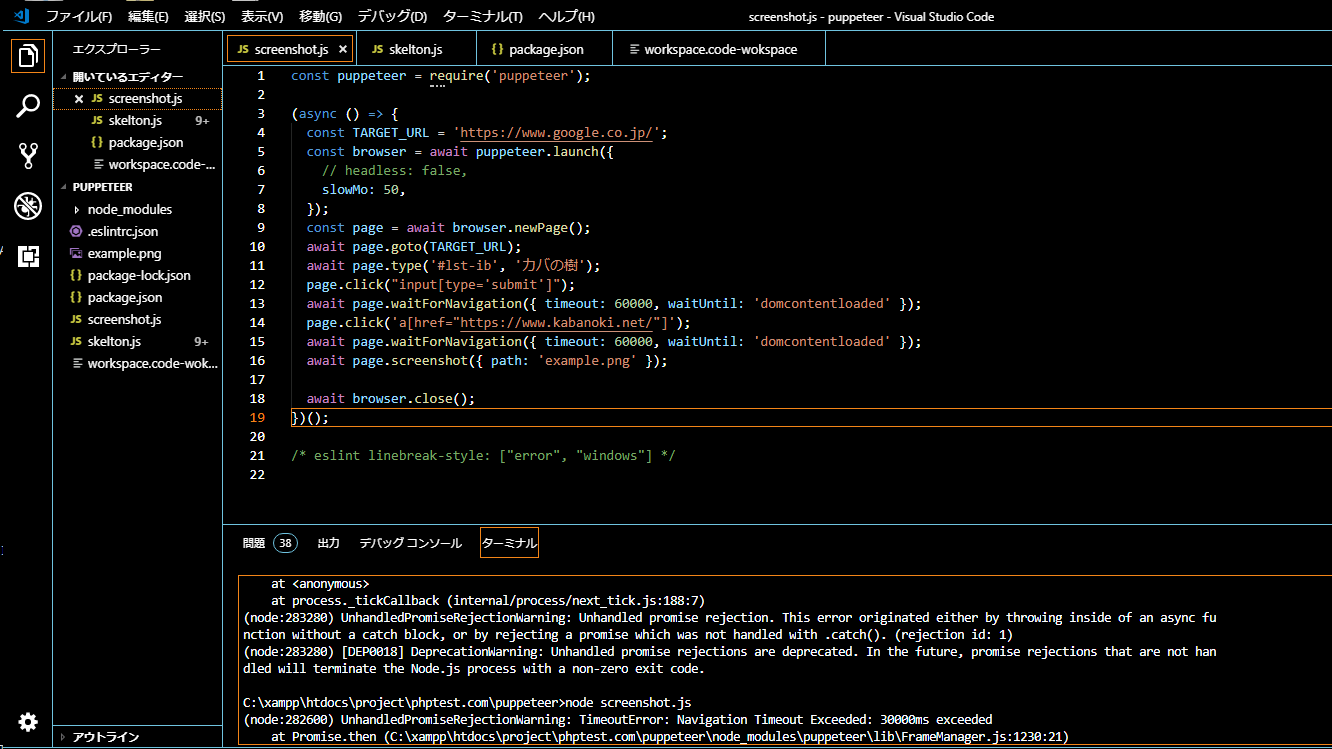
This is the complete code where we are verifying (both by using screenshots and through the code) that our “contact us” functionality is working as expected, and the user lands on the Thank you page after filling the valid details. const puppeteer = require('puppeteer') Ĭonst browser = await puppeteer.launch() Īwait page.screenshot()

Let’s start with the first example where we will be navigating to, take a screenshot of the homepage and save it as example.png in the same directory.
PUPPETEER SCREENSHOT PATH HOW TO
Now we will learn how to use puppeteer with some code examples! Example Code #1 – Take Screenshot and Save Image This will take some time as Chrome headless will be downloaded and progress will be shown in the command prompt. Use the following commands using command prompt: mkdir testproject cd testproject npm i puppeteer

PUPPETEER SCREENSHOT PATH INSTALL
Now, you can create a directory where we are going to work with our code and install puppeteer. Being a library, puppeteer-core is fully driven through its programmatic interface and disregards all the PUPPETEER_* env variables.” Getting Started Installationįirst of all, we need to install all the required dependencies for puppeteer that include, node package manager (npm) and if it’s not already installed in your machine – Then go ahead and follow these steps here to setup npm. puppeteer-core doesn’t download Chromium when installed. Puppeteer-core is a library to help drive anything that supports DevTools protocol. Being an end-user product, puppeteer supports a bunch of convenient PUPPETEER_* env variables to tweak its behavior. When installed, it downloads a version of Chromium, which it then drives using puppeteer-core. “ puppeteer is a product for browser automation. Here is the difference between the two from the official documentation: We have two packages maintained on Github for Puppeteer, namely puppeteer and puppeteer-core. You can automate tasks on web pages such as form submission, scrape data from websites, test user interfaces and compatibility with Chrome versions, take screenshots and export web pages as PDF, and more advanced features we will discuss in future articles. Puppeteer has been gaining popularity since its inception, due to its growing community and support for headless chrome that is very popular with web scraping and UI automation. It runs headless by default but can be configured to run full (non-headless) Chrome or Chromium. Puppeteer is a Node library that provides a high-level API to control Chrome or Chromium over the DevTools Protocol. Automated Contact Form Submission using Puppeteer with Chrome & Javascript.

PUPPETEER SCREENSHOT PATH PDF
.jpg)
Example Code #1 – Take Screenshot and Save Image.In this beginner’s guide, we will dive into what is Puppeteer, install required dependencies and demonstrate some of its capabilities via code examples. Recently, there has been a lot of talk around Puppeteer, and the wide range of features it can offer with very lightweight code! It is a node.js API library that enables control over headless Chrome you can use for web automation.


 0 kommentar(er)
0 kommentar(er)
